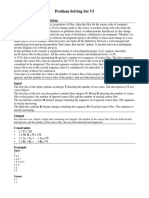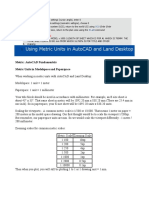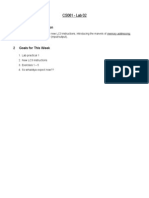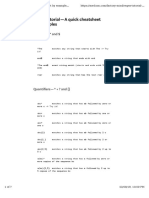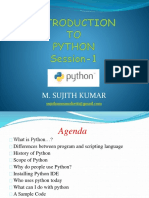0% found this document useful (0 votes)
34 views13 pagesSelf-Practice - Problem Solving - Day 06
The document outlines a self-practice exercise for SDE readiness training, covering various problem-solving topics such as basic math, control flow, arrays, strings, functions, and bit manipulation. It includes a series of hard-level problems with detailed statements, examples, and constraints for each problem, such as finding friendly pairs, printing patterns, counting subarrays, and more. The document serves as a training resource for individuals preparing for software development roles.
Uploaded by
2k22cse081Copyright
© © All Rights Reserved
We take content rights seriously. If you suspect this is your content, claim it here.
Available Formats
Download as PDF, TXT or read online on Scribd
0% found this document useful (0 votes)
34 views13 pagesSelf-Practice - Problem Solving - Day 06
The document outlines a self-practice exercise for SDE readiness training, covering various problem-solving topics such as basic math, control flow, arrays, strings, functions, and bit manipulation. It includes a series of hard-level problems with detailed statements, examples, and constraints for each problem, such as finding friendly pairs, printing patterns, counting subarrays, and more. The document serves as a training resource for individuals preparing for software development roles.
Uploaded by
2k22cse081Copyright
© © All Rights Reserved
We take content rights seriously. If you suspect this is your content, claim it here.
Available Formats
Download as PDF, TXT or read online on Scribd
/ 13







